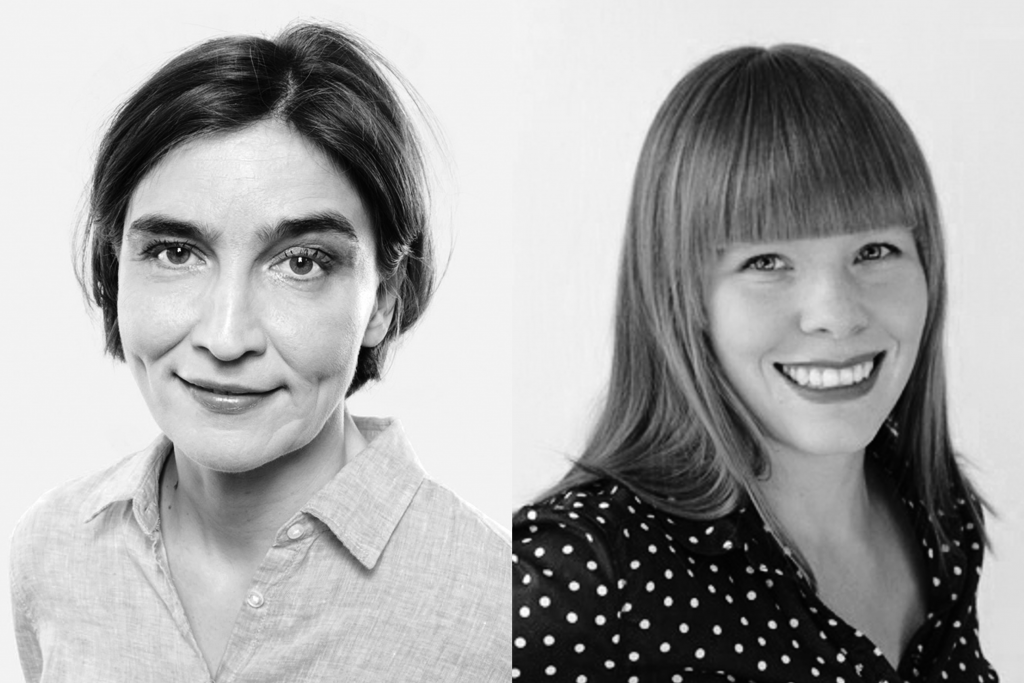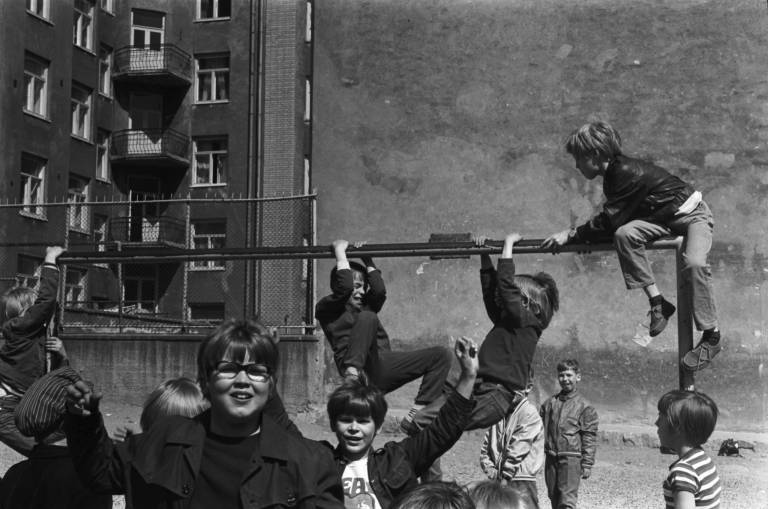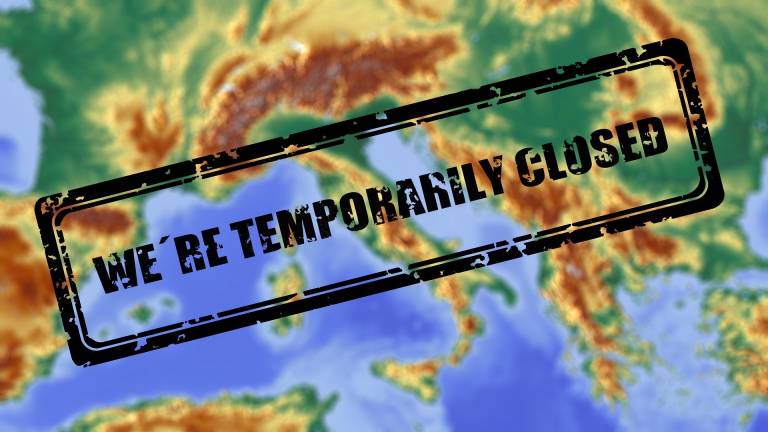Politically, they represent a clearly American economic thinking where everyone is a master of their own destiny in a state that is bureaucratic and passivating. If they were to decide, Finland would be made into America where both taxes and social benefits would be cut.
How do the rich see themselves in relation society? What opinions does an heir of an old, wealthy family have of Finland and taxes? What does an owner of a major business think of unemployment? How would a CEO of a big company develop society?
Huipputuloiset (“The Top Earners”) (published in Finnish by Vastapaino in 2019) by Anu Kantola, professor of Media and Communication Studies at the University of Helsinki, and Hanna Kuusela, university researcher and adjunct professor at Tampere University, depicts the Finnish upper class of the 2000s. The Top Earners is a peer-reviewed research into the lives of the top 0.1% of high-income earners in Finland that is becoming detached from the rest of society.
The book is based on research that extends wider than any prior research done internationally. Kantola and Kuusela traced the top 5,000 high-income earners based on their tax records spanning ten years and tracked down the source of their wealth. The researchers interviewed in total 90 people belonging to three of the biggest core groups among top earners: heirs, executives, and entrepreneurs. In addition, they explored how the top earners are involved in representing political interests as board members of business organizations.
Alusta interviewed Kantola and Kuusela.
The top earners have a bleak disposition to democracy and a morbid perception of the current and future state of Finland. You write that the top earners are reluctant to pay taxes because they have no faith in Finnish society. The richest have clear, unanimous plans for reform: down with social support and taxes, up with efficiency. You write:
The top earners appear to be becoming detached from society at least in that they picture Finnish society in rather dreary colors, and they lack a strong sense of solidarity extending beyond income groups to all their fellow Finns. The top earners are willing to pinch, painfully even, those they believe are having it too easy. The pessimism Finnish top earners display toward society is an internationally interesting topic particularly because it gives insight into which direction the Nordic model may be heading in the reign of free market and financial economy. The Finnish welfare model built in the late 1900s was based on a high tax rate that funded an affordable education, healthcare, pensions, and social security to all. These resources created an equality of opportunity and conditions for the true American Dream, where everyone had a change to climb up in society.
Why and for what are top earners lobbying if they do not trust democracy? To what extent do they have a hold on the Finnish society?
Anu Kantola: Politically, the top earners want to reduce taxes, and because taxes fund the Nordic welfare state, the top earners often criticize the big public sector and social benefits. They also suspect that excessive benefits make people lazy, and for example, cuts in unemployment benefits would encourage people to work. Unemployment is due to passiveness that should be approached with the stick, not the carrot. While not planning to become tax exiles themselves, many were also sympathetic of those who did.
Board members of business organizations – primarily employers’ organizations– were notably often top earners.
Hanna Kuusela: The views of the top earners are significant because they are clearly active lobbyists. Our research proved that board members of business organizations – primarily employers’ organizations– were notably often top earners. Between 2006 and 2018, over 40% of board members in these organizations belonged to the top 0.1% of high-income earners. Some boards had memberships with over 70% belonging to the top income 0.1%. The result surprised us because we presumed that the top earners would not be so strongly involved in every-day lobbying.
According to your book, big company CEOs say that executives have busy networks where they build a shared identity and share social and political ideas. You write:
Interestingly, hardly any top earners wish to be seen or have any public influence, but many turn out to be active citizens and lobbyists, who have connections to the political elite. The wealthy elite often work hidden from the public eye.
What are the networks of top earners?
Anu Kantola: In Finland, the elites are a rather small group, many of whom subscribe to the saying that Finland is a club where all members are just a phone call away. At the very top are a small group of big company CEOs who form the core of business lobbying. Executives are particularly eager to join lobbying boards and have good connections to politicians. Financial and political decision-makers mingle at various informal seminars and events. They also hunt and exercise, and executives in particular are goal-oriented sportsmen. Heirs have their own union branded as a family company union where they lobby for their own interests. Entrepreneurs are the most fragmented group. Their lobbying often means good connections to government officials and politicians when the business of their own company is concerned.
You write:
When we met with Finnish top earners in meeting rooms at major company head offices, family company reception rooms, and in factories on ring roads, most said they live a completely normal life where hobbies, lifestyles and values are just like those of every other Finn. In an era where we are drifting in the direction of people wanting to emphasize their uniqueness and individuality, the top earners aim to blend into the average and downplay their wealth.
First and foremost, convincing people of their normalcy appears as a means to tell others a moral story that the wealthiest in the country have earned their place and that money has not spoilt them.
The Finnish top earners in your research emphasize their normalcy? Why?
Hanna Kuusela: Reasons are surely many. Firstly, the Finnish and Nordic culture. Bragging about wealth is traditionally looked down upon, and the significance of work is emphasized. The Protestant or Lutheran attitude or working moral is familiar to all.
On the other hand, recently the same phenomenon has occurred elsewhere in the world as well: the rich necessarily do not even want to emphasize their richness but rather their own middle-classness. Large income and wealth disparities fit ill with democratic and meritocratic social ideals. People do accept economic differences but only to a certain point. Many believe that excessive economic disparities do not benefit society. Socially justifying exceptionally large income and wealth is increasingly difficult. Therefore, many top earners, both Finns and foreigners, rather aim to present themselves as middle-class with their middle-class modest virtues.
Surely, another reason could also be that people tend to compare their own position to those of others. And, by comparing themselves to the richest people in the world, many Finnish top earners genuinely believe they are just an ordinary high-income Finn instead of being genuinely rich.
According to your research, one of the central means for heirs to justify their wealth and position is to support the Finnish society and the needs of Finland. You write:
Their own impression is that they are not capitalists, biased profit-seekers but persevering builders of society who recognize the value of Finland and the Finnish society. By emphasizing their social responsibility, the heirs we interviewed also often presented themselves as investors, taxpayers, or employers whose action benefit the whole society.
The employment-boosting impact of companies has been used to justify the concentration of high incomes and capital. But, does it function in a time where wealth is increasingly international and separate from real economy?
Hanna Kuusela: This is a good question. Many traditional Finnish firms have already outsourced their production abroad, to Asia in particular. While others have completely sold their companies to venture capitalists or to their international competitors. Many former industry families have hence become investment families. If they actively invest in Finland and in well-employed industries, their importance as job creators would be somewhat true. There are, however, plenty of signs, and many of the heirs we interviewed said how return of investments and competitiveness are actively searched where most easily available—that is, often beyond Finnish borders.
There are, however, plenty of signs and many of the heirs we interviewed said how return of investments and competitiveness are actively searched most easily available—that is, often beyond Finnish borders.
Our interpretation is that the top-earning heirs have two quite different and largely contradicting explanatory schemes at their disposal: on one hand, they refer to themselves as builders of society, on the other hand, most of them function in the global economy just like everyone else does, seeking the best profit without any greater moment of reflection on the social consequences of their own economic actions.
Anu Kantola: Many companies do continue to bring income and employment to Finland as well. The assembly work and partly the planning is outsourced due to market demands, but the head offices and planning are mainly in Finland. However, the flipside is that Finland is a great location for companies—thanks to the welfare state. High tax rates have practically funded free education, affordable healthcare and the social sector where everything produces labor for the companies. The companies have less pressure to afford wages because the employees do not have to pay for their children’s education, and services are available. For example, one of the secrets to Nokia’s success was the moderate wage rate for engineers. The welfare state has indeed created beneficial circles where investments into services have also brought economic growth. It is hard to imagine how a small society like Finland would survive if the poverty rate was that of United States: a large portion of the population would become marginalized, and this would be immediately visible in society and in the streets as well as also harm the companies.
Nearly all the heirs we interviewed thought inheritance tax was an issue. Some argued it should be eliminated entirely. The heirs particularly among the top earners proposed eliminating the inheritance tax as a remedy to economic problems.
Inheritances are concentrated on top earners. You write:
For example, in 2014, those earning less than 50,000 euros paid inherence taxes only a tenth of that of those earning 200,000 up to 500,000 euros. If inheritances were not taxed at all, the door to an inheritance-based society would fling open: wealth being transferred from generation to generation would concentrate wealth to only few and increase inequality, as the international studies on the inheritance of wealth suggest.
What is the most important mechanism for becoming a top earner in Finland, that is, how has the money concentrated on the top earners? How much does inheritance account for?
Hanna Kuusela: Researchers and especially politicians around the world are passionate about this question. Many researchers have various differing opinions on how much inheritances and the so-called self-made money account for the creation of income and wealth disparities.
Our research provides some applicable results to how taxables and income taxes in Finland are concentrated. According to our research, between 2007 and 2016 one third of the top 0.1% of the high-income bracket consisted of executives, around sixth were heirs, and around sixth had grown wealthy by founding their own business. The rest were often professionals such as lawyers or doctors who had amassed their wealth by being company stockholders.
It is still worth remembering that we research income, not property. If we had the opportunity to repeat a similar research on property, the result would probably be different.
It is still worth remembering that we research income, not property. If we had the opportunity to repeat a similar research on property, the result would probably be different. Heirs and perhaps entrepreneurs as well would definitely have a more prominent position. Some indications are given by, for example, the significant concentration of stock wealth especially for heirs as well as the massive capital income of entrepreneurs and heirs and their average income exceeding that of executives. After eliminating the wealth tax, we struggle to have accurate information on properties, so these are estimates based on fragmented sources.
We cannot therefore provide a final answer to the question of how people are becoming rich in modern-day Finland either, but we can provide one good and reasoned partial answer.
Anu Kantola: We also found it interesting how 17% of those belonging to the top 0.1% remained hidden: based on their name from public records we could not figure out who these people were, and they had left no trace, which was strange given that their income was still quite massive. Presumably a large part of them are heirs, such as women whose last name had been changed after marriage. This would mean that at least one third of top earners may be an heir. That is quite a large amount in a country where social mobility is one of the greatest in the world. The equality of opportunity may not necessarily be achieved that well, not even in Finland where it is top of the world.
Climate change is not mentioned one time in your book. You argue that the top earners are those who are central in wielding the power in society, and crucial decisions made about climate change are in the hands of the elite. What could be the role of the rich in solving this problem that is shared by us all but also that has concentrated the wealth of top earners? How would you imagine the top earners seeing their responsibility in this matter?
Hanna Kuusela: It is true that our book does not cover this subject. The reason is simply that so few of our interviewees spoke of the issue. We did not particularly ask about this issue, but then again climate change or environmental issues never came up either when we asked our interviewees about the greatest challenges facing Finland. Only few spoke of climate and environmental issues: one or two of our interviewees thought the subject was very important, but a couple of interviewees also restrained themselves from talking about the subject.
Your book was given a grant by Kone Foundation’s funding program ’Is Finland becoming polarized?’. The program awarded a total of 3.8 million euros to fund approximately 30 projects. When examining inequality, researches typically look into those in the lowest income bracket. Why did you choose the other end of the income spectrum?
Anu Kantola: Finland is one of the world’s most equal countries and it was therefore interesting to research, what the rich are like here. The results demonstrated that even in the most equal countries the rich have become a political force that aims to serve their own interests while increasing the wage gap.
Hanna Kuusela: Globalization, EU membership and free markets have left Finland in quite a whirlwind. We were interested in how the national project and the future of the welfare state looked like from the viewpoint of the elite in the center of this whirlwind.
One simple reason for choosing our subject was that the financial elite have been so scarcely researched in Finland, although public tax records enable research even better here than in many other countries.
Of course, one simple reason for choosing our subject was that the financial elite have been so scarcely researched in Finland, although public tax records enable research even better here than in many other countries.
In recent decades, the financial elite has yet again become an important global research question, largely inspired by the increasing income and wealth disparities. One of our incentives was exactly this international research. In other words, we wanted to bring this research into Finland.
A working title for your book was the Project of the 0.1%. What would the project of the Finnish top-earning 0.1% be like?
Anu Kantola: Politically, they represent a clearly American economic thinking where everyone is a master of their own destiny in a state that is bureaucratic and passivating. If they were to decide, Finland would be made into America where both taxes and social benefits would be cut.






